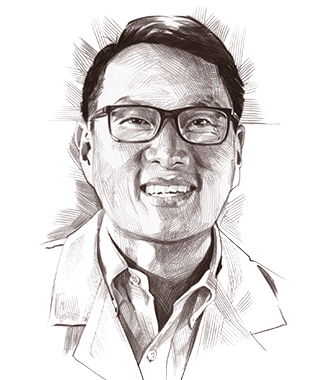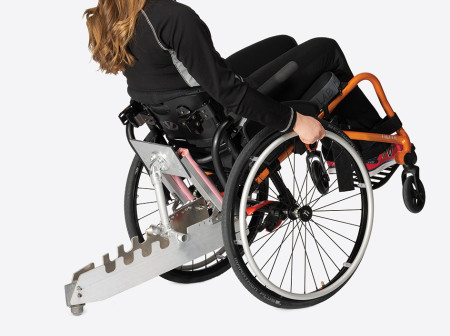When I arrived at Northwestern in 1990 from my family’s home in Malaysia, I was driven by two passions: to learn science at the most fundamental level and to use that knowledge to help people. My goal was to become a physician.

Illustration by Bruce Morser
On the first day of my organic chemistry class, I learned that electrons orbit their nuclei only in certain predefined configurations and that these configurations form the basis of all atomic and molecular interactions. I was fascinated by this concept, which forms the foundation of not only chemistry but also molecular biology, genetics and medicine. It is the action of individual atoms and molecules that drives biological processes at the cellular level.
To better understand this concept, I majored in physics in addition to my premedicine program. After being accepted to the Feinberg School of Medicine in 1993, I decided to take a three-year deferral to study nuclear and elemental particle physics at the California Institute of Technology. I obtained a master’s degree and then returned to Feinberg to earn my medical degree. I now run a private medical practice in Niles, Ill.
I am a physician, but I am also an educator. In 2014 I began collaborating with Professor Vicky Kalogera, director of Northwestern’s Center for Interdisciplinary Exploration and Research in Astrophysics (CIERA), to bring science, technology, engineering and math education to schools in the Chicago area. Shortly after her team contributed to the discovery of gravitational waves in 2016, we organized a presentation on the topic to students at Wilmette’s Highcrest Middle School. We also collaborated on curriculum development for Science Olympiad classes in Wilmette School District 39.
The educational path I took at Northwestern also provided me with resources to teach physics concepts to the interns, residents and patients with whom I interact on a daily basis. In April 2020 I installed a negative airflow system in my clinic after learning that the novel coronavirus can stay airborne for many hours as aerosolized particles. I used this as an opportunity to educate every patient in our office about how a negative airflow system works. We ran a computer simulation in the waiting room so patients could visualize how aerosolized particles, without any propulsion system of their own, move by simply obeying laws of physics. Patients found it easy to understand the importance of directional airflow.
I also used my understanding of quantitative principles to teach patients about the efficacy of personal protective equipment. During the early days of the pandemic, when some people wanted to better protect themselves by wearing an N95 mask, I pointed out that they could achieve even better protection through a series of independent activities: wearing a regular face mask, washing hands frequently, physical distancing and avoiding large gatherings. Although each activity on its own carries a much lower rate of protection than the 95% achieved with an N95 mask, combining all the activities results in higher protection.
My training at Northwestern and my ongoing relationships with faculty and staff have provided me with tools not only to practice medicine but also to continue to educate patients and teach science. Looking back, Northwestern encouraged me to examine and develop all my interests, and that has led me to these opportunities.
K. Chris Oh ’93, ’00 MD, ’04 GME is an internist at Advocate Health Care and NorthShore University HealthSystem who lives in Wilmette, Ill., with his wife and their two children.



Reader Responses
Thank you for sharing your story, Dr. Oh! Thanks too, for everything you have been doing to keep our community and your patients safe.
—Vic Maurer Mount Prospect, Ill.
No one has commented on this page yet.
Submit a Response